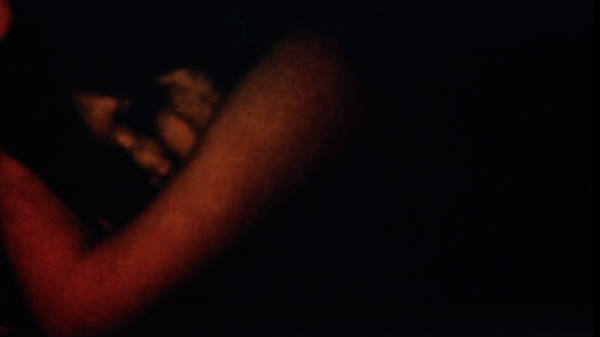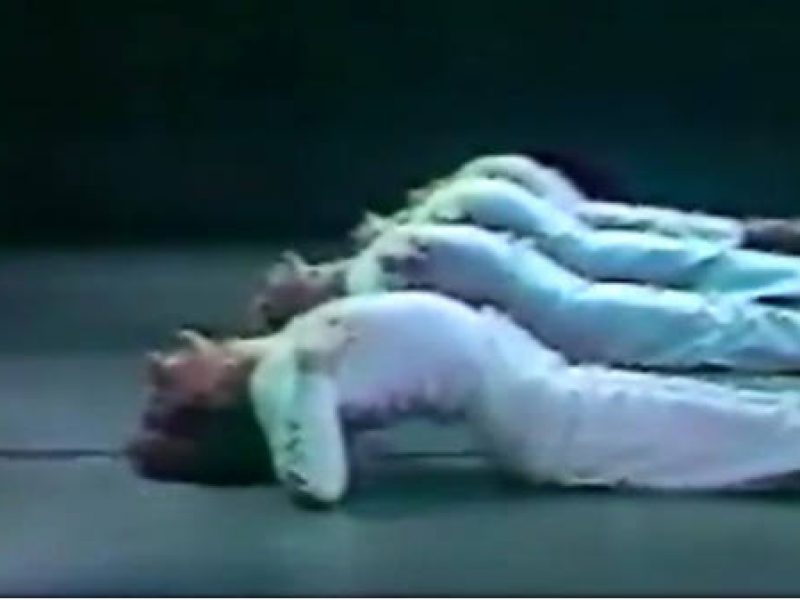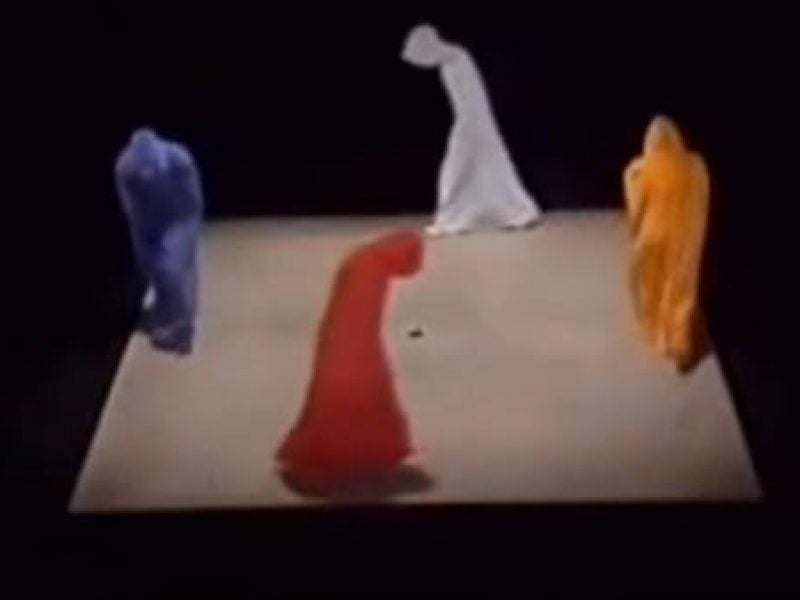True Love by Mike Dunford starts with a pulsing view of an elbow and face stirring. It’s framed by dark nothingness between shots. The same view is then repeated, the same scene darker. An image is disengaged, abstracted, murky. Re-engaged. The frame is a texture of fleshy orange and contours of shapes flash between overlapping skin that cut to blankness. It’s someone’s body being traced like a shifting microscope … but more like a caress made of just looking.
Heart-rending intensity pointed towards a body on the scale of a cropped 16mm lens. There are inexplicable areas of parts, a nipple, a non-button, a nipple. Then blankness and refrain. Repeated with a new cut and each cut is a rhythm that condenses and dissipates the energy of the image. The build of rhythm closes at 5 mins when the shots repeat backwards, like a palindrome with the same cuts in reverse order. It is an exactly circular, precise repetition, anchored around a middle point. It’s like the structure of desire itself, a rhythm that pulses, but never dissipates and doesn’t satisfy.
On Desire:
Desire is a whole lot more than want. The desiring doesn’t acknowledge satisfaction like a want, it is never sated; desiring keeps on desiring. It continues to function by maintaining a distance to the pathological object. Desire functions by not being satisfied; it has a distance to it in order to be operative. I want this object, but I accumulate desire. For the desiring it isn’t even the object itself, we don’t even necessarily want what we desire – it is rather the assemblage. I desire within an aggregate: “[t]here is no desire that does not flow within an assemblage […] to desire is to construct an assemblage”
“[…] the slender and very dark finger of her left hand which, in a conversation, the young woman, anxious because she is afraid of what she believes to be your erudition, passes over her eyebrow, while in the other hand she pulls at a cigarette – here is a real region to invest, one can die for it, one can give all one’s organicity, one’s ordered body, one’s functional arrangement of organs, one’s memory of organs, one’s socio-professional status, one’s supposed past and one’s supposed future, one’s agenda and one’s intimate theatre, one can feel like paying very dearly, exorbitantly, for this finger which is like an engraver’s stylus and the whole orbital space, cranial, vaginal, that it engenders around the eye” (Lyotard, 4)
We risk everything not for the object, but the assemblage, the situation, the libidinal exchange, because the young woman’s finger represents the accumulation of libidinal intensities and desires, and each of those has its charge produced from yet more accumulations. This desire cannot be conceived outside a determinate assemblage, it operates within an assemblage, we are in it already and as Lyotard describes, “be inside and forget it” – everything is a libidinal economy.
For Lyotard and Deleuze, desire is not produced through a lack, it invests wholly and without condition. There is no negation. It is produced and machined. This desiring is immanent and manipulable, it isn’t resigned to the helpless drives and privatised “theatre” of an individual’s psyche, it is produced, machined and mobilised by the social: “there is only desire and the social, and nothing else” (Deleuze, 29).
In Anti-Oedipus, Deleuze and Guattari see the neurotic as the one who is defined by the psychoanalysis’ Oedipal structure unable to re-deploy and re-channel their desire back into the social body for resistance and collectivism. It is the psychotic who cannot be Oedipalized whose libidinal energies and desires flow and whose libidinal investments penetrate into the social field: “productive of desire and a desire that produces”.
Desire as production and production of desire is performed through repetition in moving image. The repeated glimpses of a lover’s body in True Love produces the libidinal charge. Moving image refers to but does not satisfy, it creates an embargoed object and an assemblage of desire reduced to an image; a flash of skin, which is itself a screen.
Tim Steer is a curator and writer based in London. He is Associate Director of Seventeen and a co-founder of Opening Times.
References
Deleuze, Gilles & Guattari, Felix. “Anti-Oedipus: Capitalism and Schizophrenia”. New York: Viking Press, 1977.
Lyotard, Jean-Francois. “Libidinal Economy”. London: The Athlone Press, 1993.






